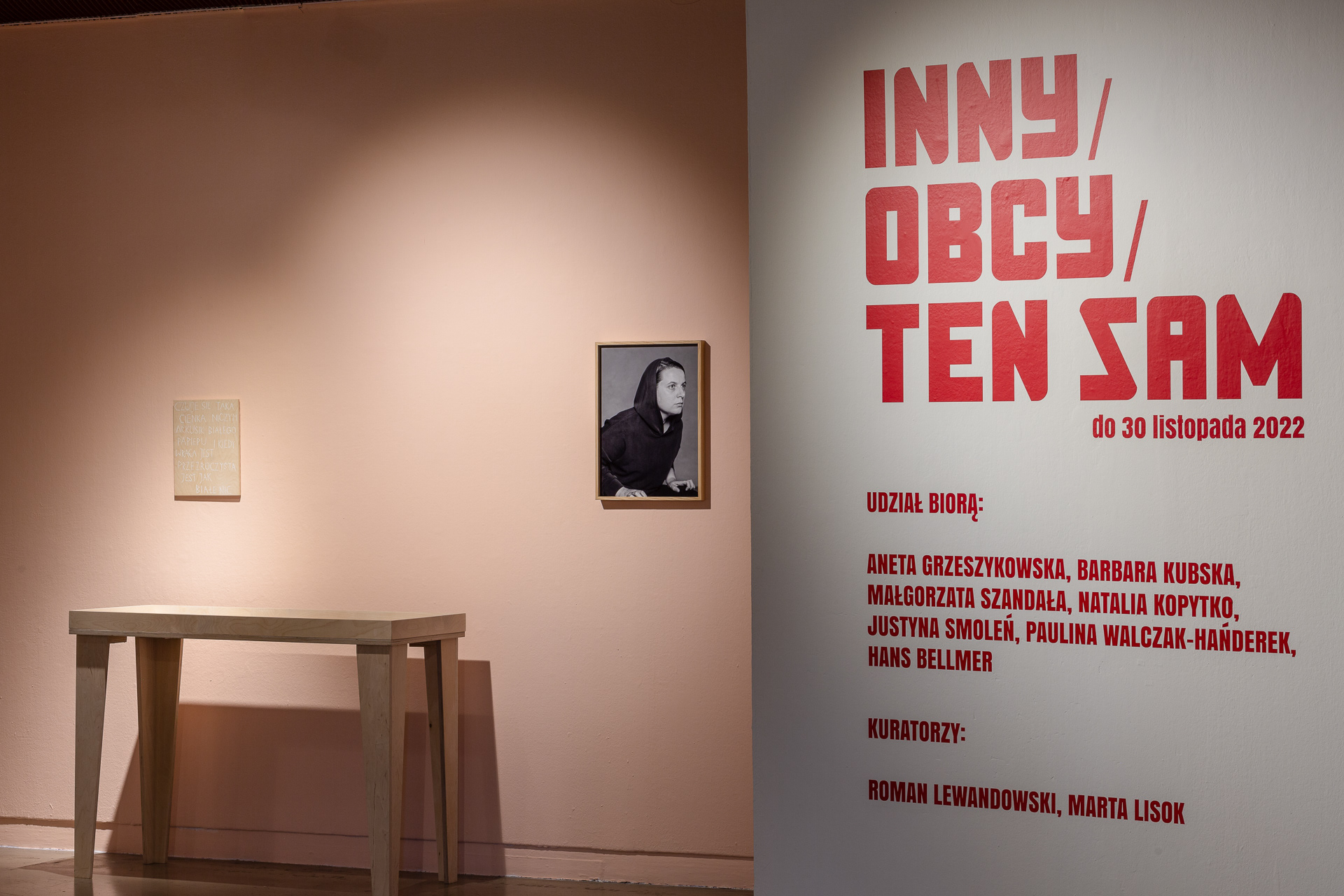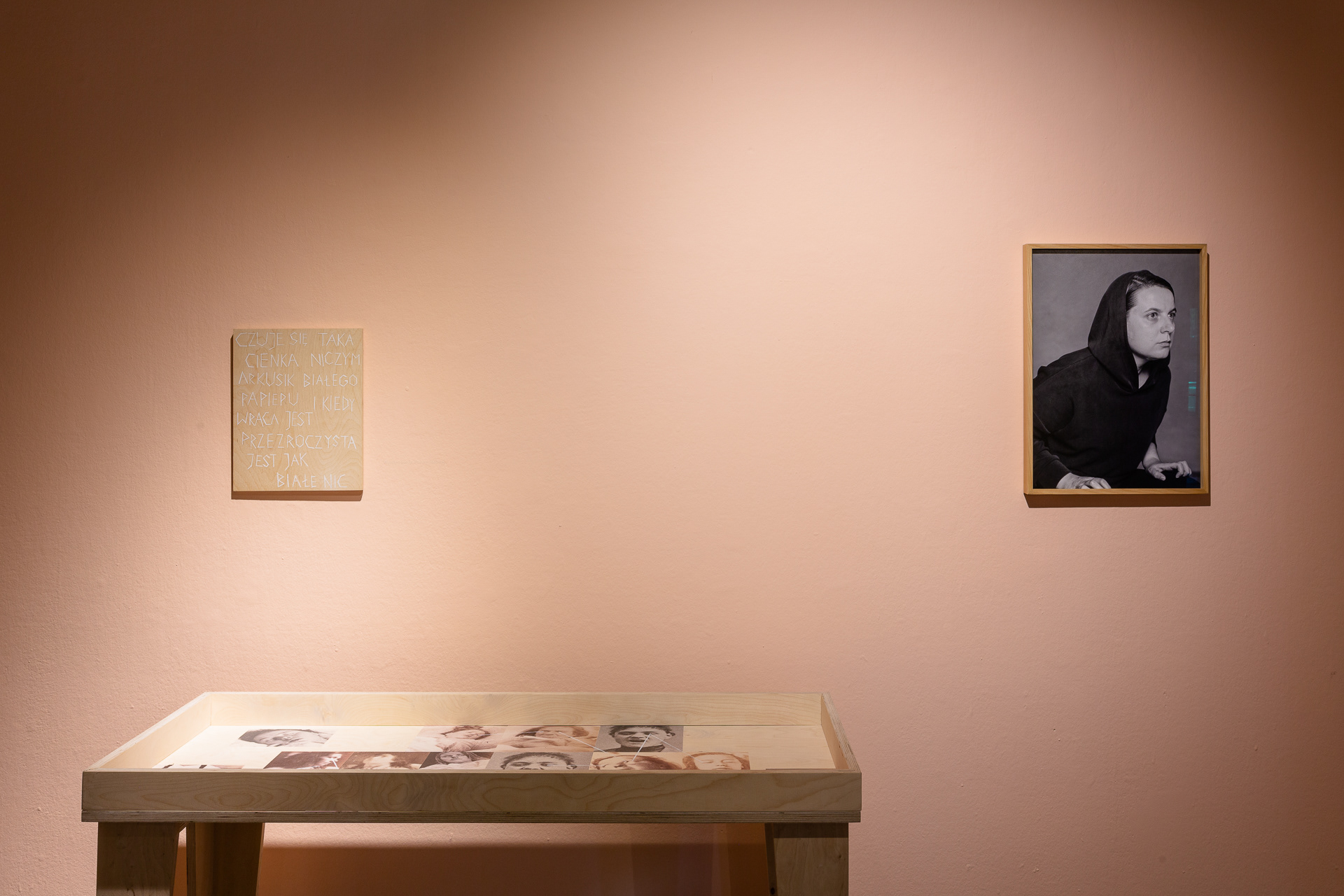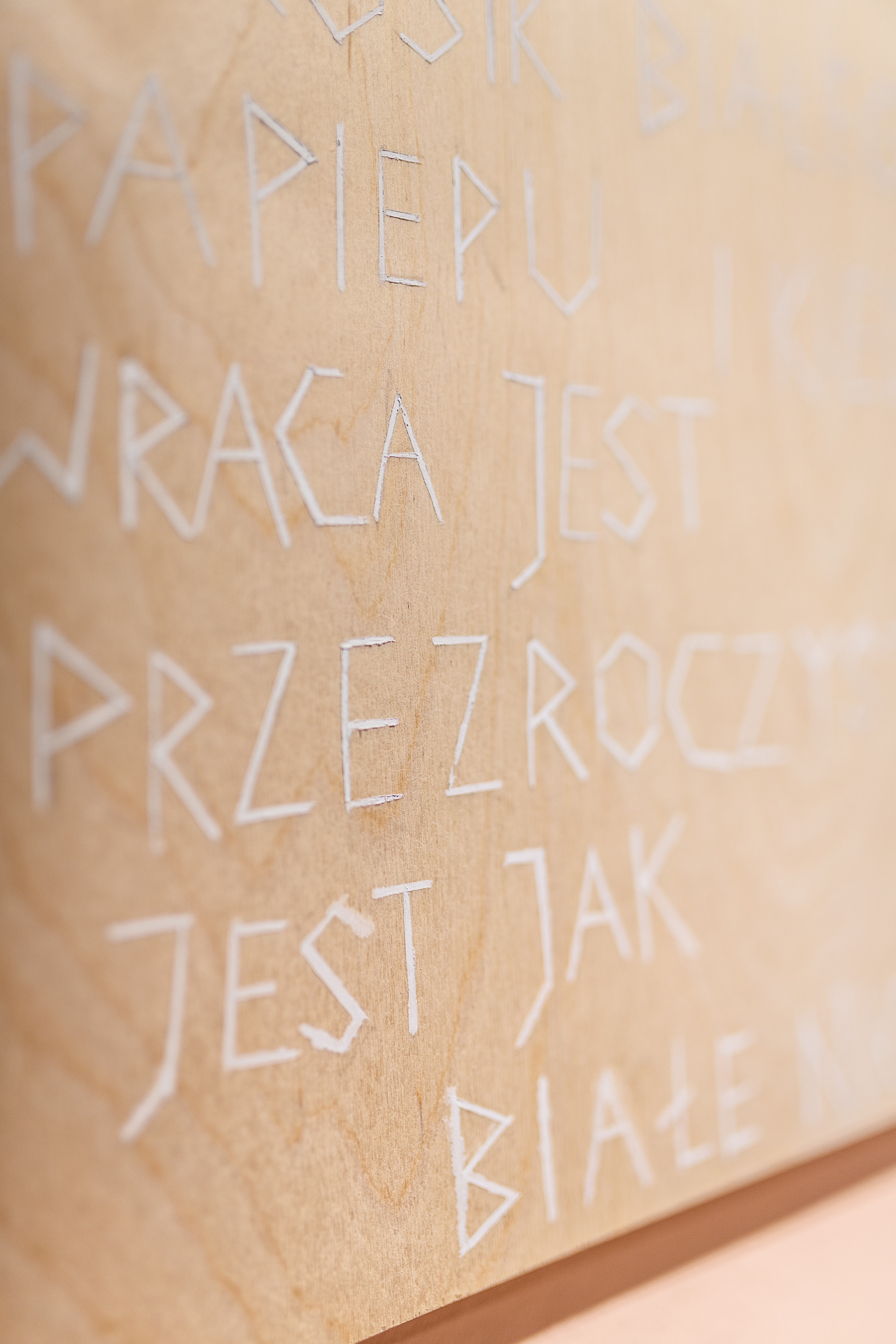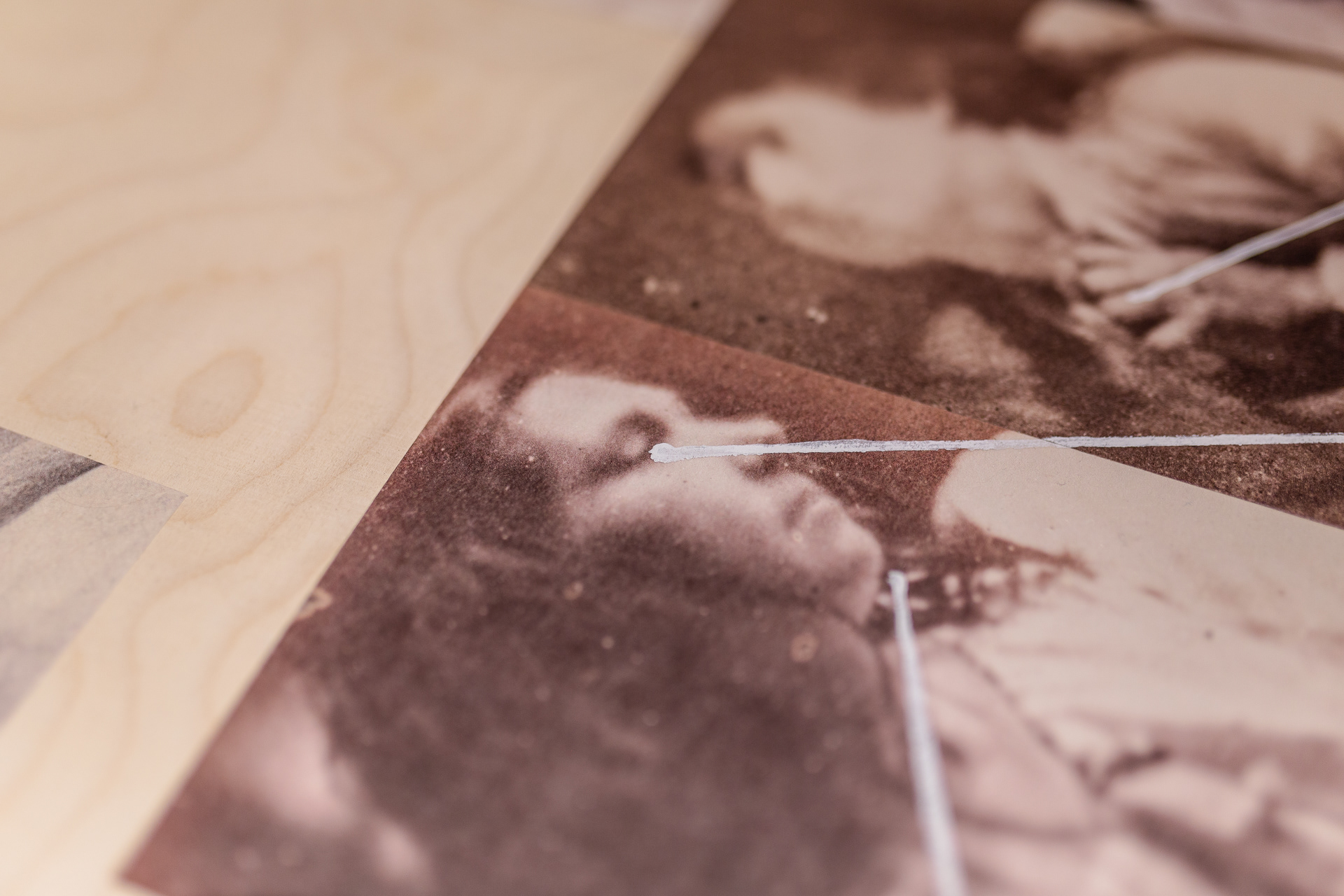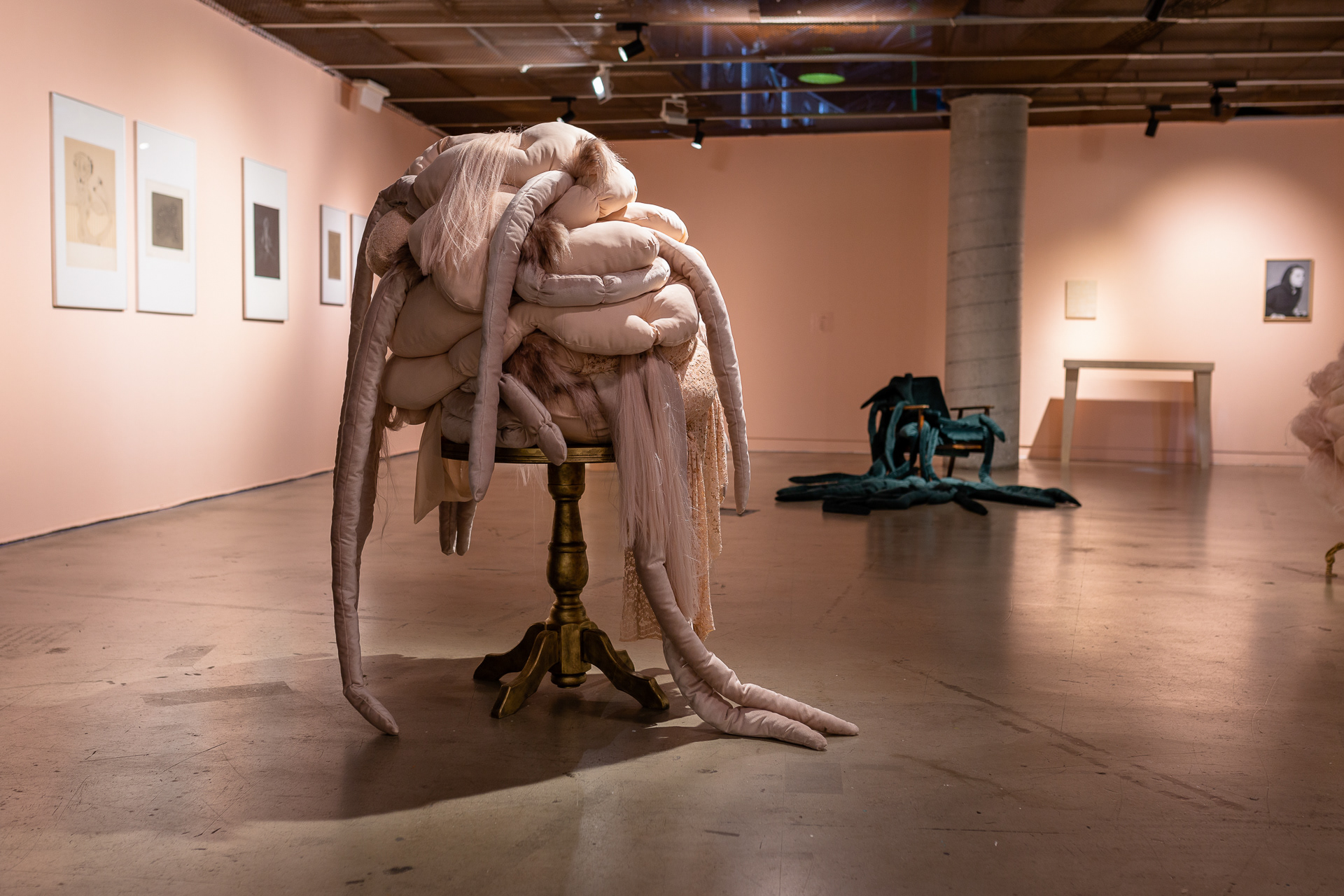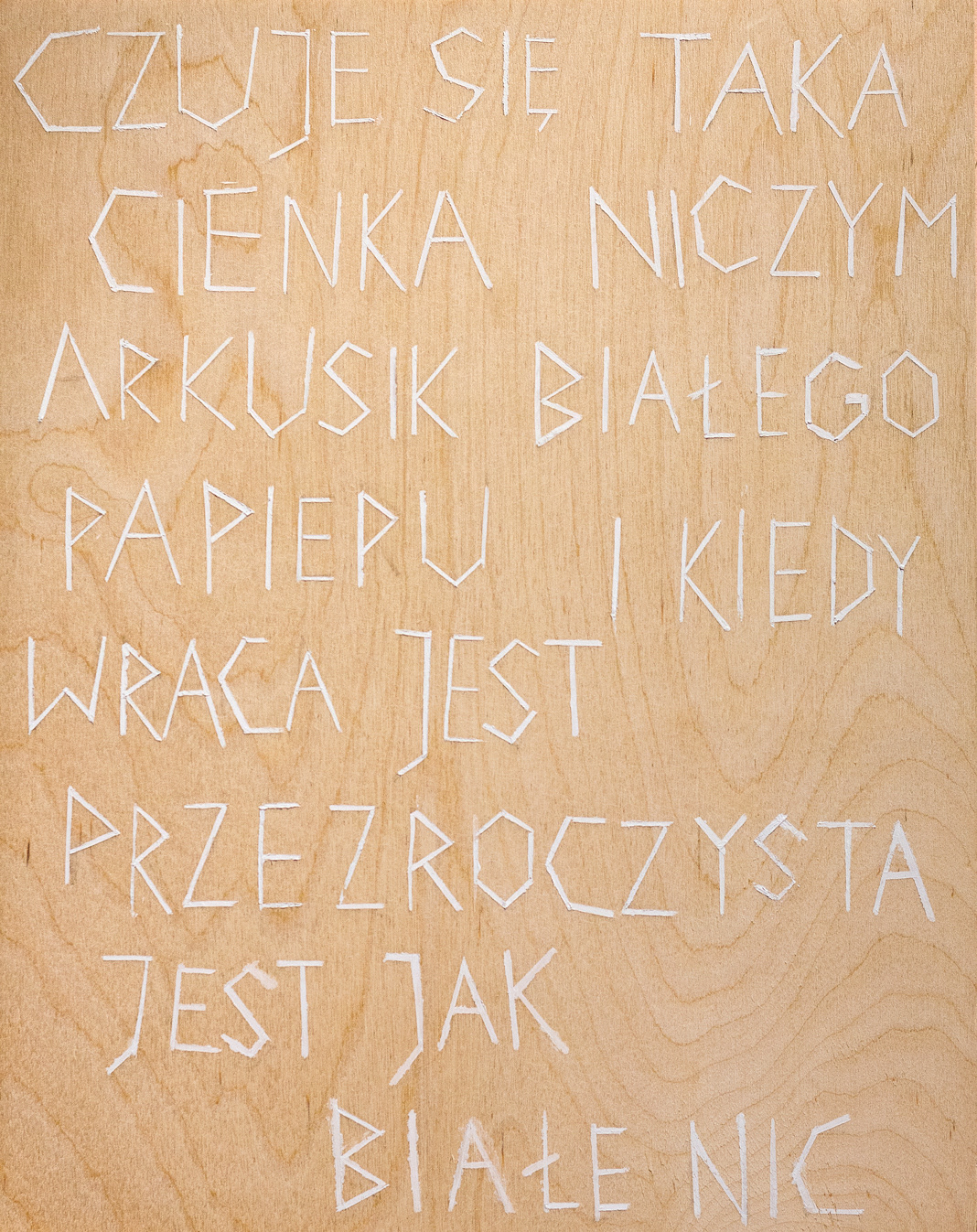
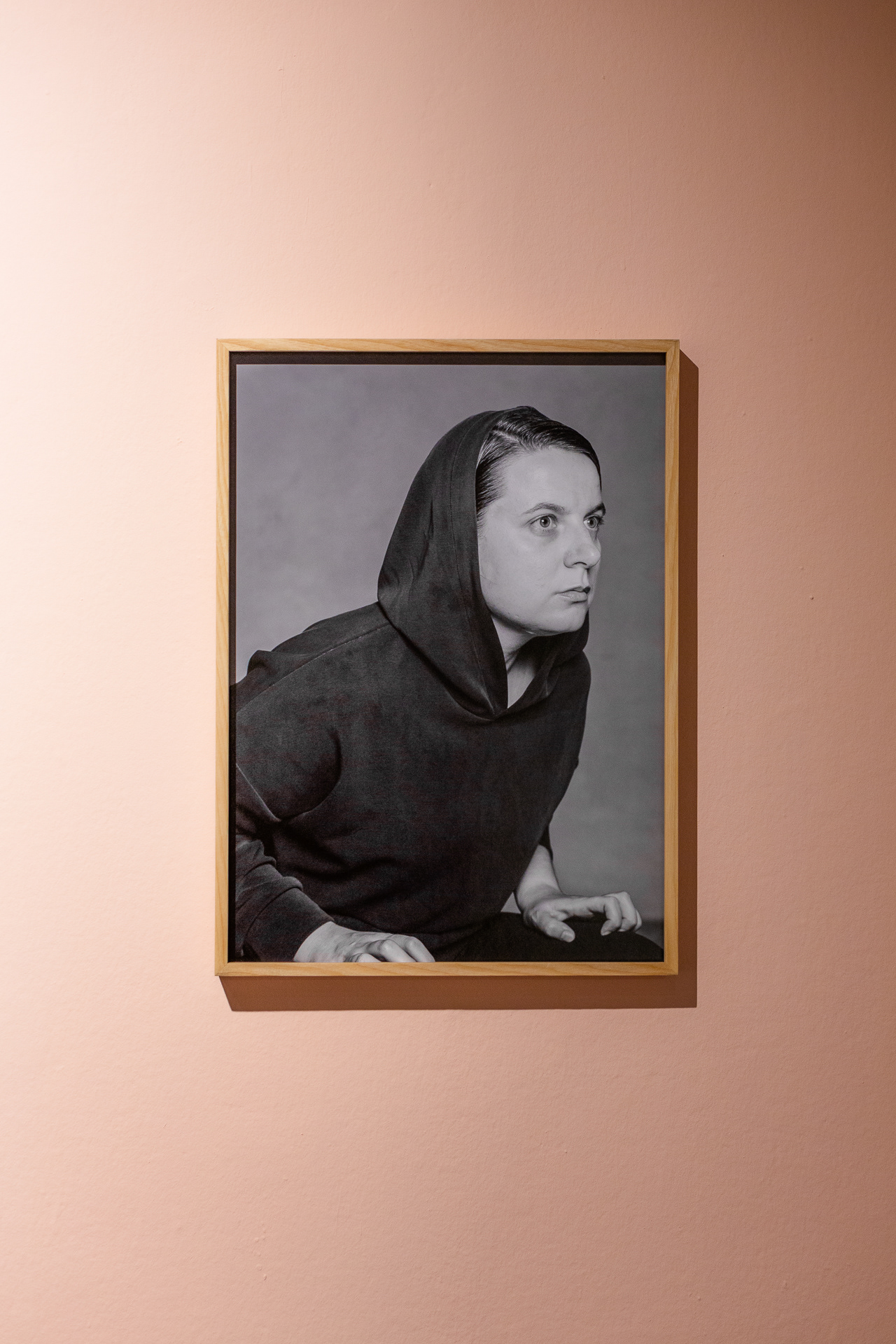

She feels thin – like a sheet of white paper
Czuje się cienka – niczym arkusik białego papieru
Czuje się cienka – niczym arkusik białego papieru
2022
EN
“They tell her to get rid of the contents of the years, just as a surgeon orders a bowel movement before making the first cut. She feels thin – like a sheet of white paper. [. . .] and when it comes back, it is transparent. It’s like white nothing. ”
“They tell her to get rid of the contents of the years, just as a surgeon orders a bowel movement before making the first cut. She feels thin – like a sheet of white paper. [. . .] and when it comes back, it is transparent. It’s like white nothing. ”
Artist and writer Unica Zürn, in her autobiographical short story The Man in Jasmine, describes scenes in which the body is taken over by psychic processes. It is dominated by both heart reactions, the warm energy of passion revealed in the solar plexus, and hallucinations caused by disease. She then jerks her and pushes her into action, another time handcuffing her to the bed in a helpless condition. The body acquires content, swells in its meaning, only to immediately become empty and devoid of basic efficiency. This story of the relationship with the body in the shadow of trauma, intertwines with the issue of the fear of insanity. The images of madness, a female version of the infamous hysteria, were photographed at the Salpêtrière Hospital in the second half of the 19th century on the initiative of Jean-Martin Charcot and have become a significant element of visual culture. These supposedly objective photographs used to describe the symptoms of the disease raise doubts about their expressive form and method of recording attacks induced for research purposes. Do the photographs realize only the male idea of the psychological crisis in women? Did they just describe the disease or did they create it?
The work also recalls one of Man Ray's portraits of Zürn in 1951, which seems to reveal the mental state of the person photographed. The awareness of the writer's death by suicide is not without significance in the reception of her texts. This portrait became the inspiration for a self-portrait entitled Me as Unica.
PL
„Każą jej pozbyć się treści lat, tak jak chirurg nakazuje wypróżnienie, zanim wykona pierwsze cięcie. Czuje się cienka – niczym arkusik białego papieru. [...] i kiedy wraca, jest przezroczysta. Jest jak białe nic.”
Unica Zürn, artystka i pisarka, w swoim autobiograficznym opowiadaniu Mężczyzna w jaśminach, opisuje sceny, w których ciało przejmowane jest przez procesy psychiczne. Władają nim zarówno odzewy serca, ciepła energia namiętności ujawniająca się w splocie słonecznym, jak i halucynacje wywołane chorobą. Ona to szarpie ją i pcha do działania, innym razem przykuwając do łóżka w niemocy. Ciało nabiera treści, puchnie w swym znaczeniu, by zaraz potem stało się puste i pozbawione podstawowej sprawności. Ta opowieść o relacji z ciałem w cieniu traumy, splata się z zagadnieniem lęku przed szaleństwem. Obrazy szaleństwa, w kobiecym wydaniu niesławnej histerii, utrwalone zostały na fotografii w Szpitalu Salpêtrière drugiej połowie XIX w. z inicjatywy Jean-Martin Charcot’a i stały się znaczącym elementem kultury wizualnej. Te w założeniu obiektywne fotografie służące do opisu symptomów choroby, budzą wątpliwości w swojej ekspresyjnej formie i sposobie rejestrowania wywołanych na potrzeby badań ataków. Czy fotografie realizują jedynie męskie wyobrażenie o kryzysie psychicznym u kobiet? Czy jedynie opisały chorobę czy ją stworzyły?
Praca przywołuje także jeden z portretów Zürn wykonanych przez Man Raya w 1951 roku, który wydaje się ujawniać stan psychiczny fotografowanej osoby. Świadomość samobójczej śmierci pisarki, nie pozostaje bez znaczenia w odbiorze jej tekstów. Portret ten stał się inspiracją do wykonania autoportretu zatytułowanego Ja jako Unica.
